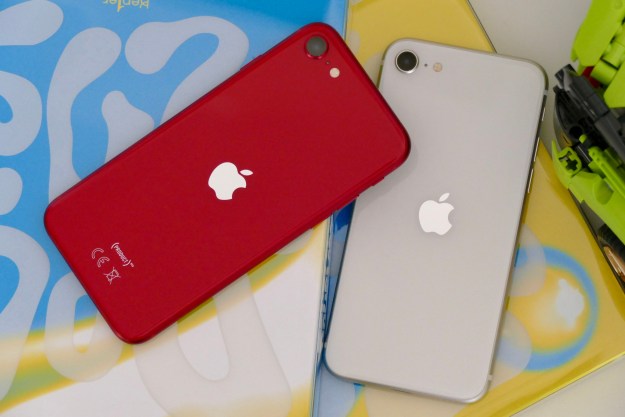After spending over $1,000 on a flagship 5G phone, you might think you’re getting the fastest network speeds possible. After all, isn’t that what you’re paying for? But our recent network testing shows that may very well not be the case, with 5G performance on flagship phones being minimally better than budget phones, and in some cases, actually worse.
To give you some context, earlier this year, we put the 5G-capable MediaTek Dimensity 700 against the Qualcomm Snapdragon 480 in a test to see which processor delivered the best
Understanding 5G
Before going into the details, we received some very interesting feedback from MediaTek after our last test, which is also relevant to this one. MediaTek contacted Digital Trends to discuss the

In the previous test, hyperlocalization of the
According to MediaTek, the variation in results depends on more than just location. The different modems in each phone all perform slightly differently, further affecting the results, along with other considerations like network conditions, whether the phone itself has been tested and is sold by the carrier, and even how the phone is configured to show when it genuinely has a
In other words, it’s very difficult to really assess
The phones
We used two of the cheapest

The Moto Edge 20 Lite has a retail price of 300 British pounds($400) and has a MediaTek Dimensity 720 processor inside. The Oppo Find X3 Lite has a retail price of 380 pounds ($505) and a Qualcomm Snapdragon 765G processor, while the 500-pound ($665) OnePlus Nord has a MediaTek Dimensity 1200 processor. Finally, the Samsung Galaxy Z Fold 3 has a Qualcomm Snapdragon 888 processor and costs 1,600 pounds, or $1,800 in the U.S.
Obviously, the Galaxy Z Fold 3 isn’t likely to be a consideration for anyone seriously looking at the Motorola, Oppo, or OnePlus phones, but it’ll be interesting to see what, if any, difference there is in
Finally, the test was run using two apps, Speedtest by Ookla and the Fast Speed Test.
5G and 4G test results
I ran all the tests multiple times with no other apps running, and with all phones running the latest versions of their respective software, then recorded the best performance for each phone. All are U.K. supplied review sample phones apart from the Galaxy Z Fold 3, which was purchased new directly from Samsung. The EE network sells all the devices tested except the OnePlus Nord 2, which is available unlocked through OnePlus.
Here’s what happened when connecting to the EE network in the U.K., with a full
Oneplus Nord 2
Speedtest by Ookla: 378Mbps download/81Mbps upload
Fast Speed Test: 440Mbps
Motorola Edge 20 Lite
Speedtest by Ookla: 442Mbps download/86Mbps upload
Fast Speed Test: 370Mbps
Oppo Find X3 Pro
Speedtest by Ookla: 438Mbps download/93Mbps upload
Fast Speed Test: 470Mbps
Samsung Galaxy Z Fold 3
Speedtest by Ookla: 392Mbps download/73Mbps upload
Fast Speed Test: 140Mbps
Later, I ran the same tests in a 4G area with 75% reception showing on each phone:
OnePlus Nord 2
Speedtest by Ookla: 78Mbps download/3.8Mbps upload
Fast Speed Test: 28Mbps
Motorola Edge 20 Lite
Speedtest by Ookla: 32Mbps download/2.3Mbps upload
Fast Speed Test: 37Mbps
Oppo Find X3 Lite
Speedtest by Ookla: 80Mbps download/3.1Mbps upload
Fast Speed Test: 35Mbps
Samsung Galaxy Z Fold 3
Speedtest by Ookla: 48Mbps download/5.3Mbps upload
Fast Speed Test: 52Mbps
Big, expensive loser?
As noted, I recorded the fastest result for each series of tests, and while the Samsung Galaxy Z Fold 3 did manage a respectable speed using Ookla, most of the time, it struggled to meet 200Mbps download on

Before starting the tests, I had expected the Z Fold 3 to be the fastest. It is, after all, by far the most expensive, costing three or four timesas much. Yet the network speeds, almost across the board, were the most disappointing. Both the OnePlus Nord 2 and the Oppo Find X3 Lite recorded faster speeds than the Z Fold 3 throughout my tests. On 4G, the OnePlus Nord 2 and the Oppo Find X3 Lite both performed very well, and while the Moto Edge 20 Lite struggled a little on 4G, it put in a great performance on
I downloaded the required apps from Google Play using the
Pricey isn’t always best
It’s great to see the MediaTek-powered smartphones hold their own against the Qualcomm-powered phones in this test when last time they differed greatly. The OnePlus Nord 2’s performance with its Dimensity 1200 processor — tweaked by OnePlus using MediaTek’s Dimensity Open Resource Architecture (DORA) initiative — cements it as a highly recommended phone purchase for anyone with around 500 pounds to spend on a new device.
The Galaxy Z Fold 3’s showing is not what I expected, and now requires further investigation, including putting it against other devices with a Qualcomm Snapdragon 888 processor inside. For now, though, it definitely shows that just because you spend a lot of money on a new phone doesn’t mean you’re guaranteed the best
Editors' Recommendations
- This phone may have already beat the Galaxy Z Flip 5 in a big way
- Here’s how fast 5G on your Samsung Galaxy S23 really is
- OnePlus Nord CE 2 5G has 65W charging, coming on February 17
- OnePlus launching Nord N10 5G, N100 in Europe, North America at enticing prices
- Qualcomm’s X60 5G modem will power the next generation of 5G flagship phones




